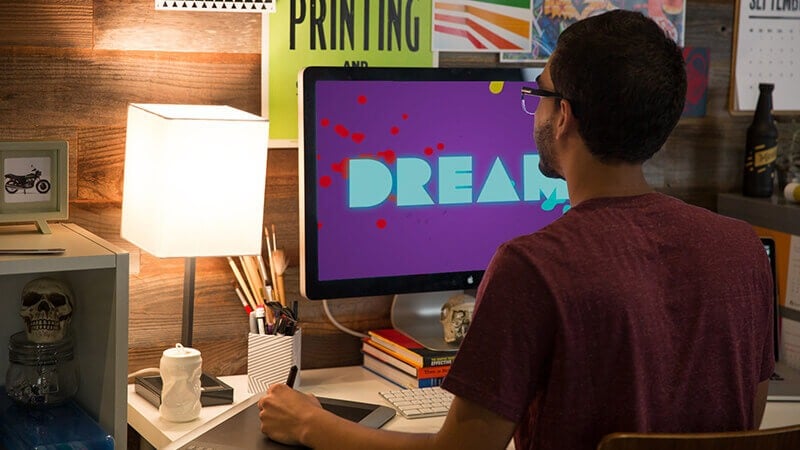Career Information
Tips for Perfecting Your Online Portfolio
In almost every creative industry, an online portfolio is a necessity. Employers want to be able to search for you and quickly be able to find your best work.
"Web portfolios – the format we push our students to produce – can contain both the more traditional aspects of a portfolio, showcasing images, and also the video presentation of a demo reel, plus additional information like resumes, breakdown sheets, blogs, and personal information," says Steve Akehurst, the Portfolio Assembly Course Director for the Computer Animation Degree Program.
But, what sets apart a great online profile from a mediocre one? The Full Sail faculty members we spoke to told us that it really varies for every field of work, but they did have a few solid tips that apply across the board. Here's what they had to share:
- Keep it Simple. According to Chad Kendall, a Program Manager in the Game Art Degree Program, what initially stands out in a great online portfolio is simplicity. "If I'm going to your website, I should immediately see your name and your work," says Chad. His favorite portfolio sites are those free of lots of links, and full of images, videos, and other work that is easily scrolled through.
- Quality Over Quantity. Both Chad and Steve agree that the quality of the content is much more important than the total amount of work. "You'll want to have at least two to three pieces on your website," says Steve. But be sure it's your best work. One thing Chad recommends not doing: showing a work in progress. "Sometimes people will post a work in progress and I'll notice that it was posted three months ago," says Chad. "So to me, all I see is that the person hasn't finished something."
- Make Contact Information Easily Accessible. Besides showcasing your specific strengths and skills, employers will easily want to be able to contact you. "You have to think, 'How many clicks does it take for someone to get to my work? And to be able to contact me?," says Megan Brown, an Associate Course Director in the Digital Arts & Design program. Megan recommends listing a direct e-mail address, because many people don't like submitting online forms.
- Consider Including a Demo Reel, Too. Choosing to include a demo reel really depends on what type of work you do. "An animator could easily get away with posting individual clips," says Steve, "but a compositor would benefit from having a reel so they can show the breakdown process of their work." Megan suggests a demo reel that's between 30 seconds and a minute, and one where the music you choose is edited so that the beats cut right in time with the transitions.
- Update Your Work. "Students are leaving Full Sail right out of [final projects and] portfolio classes," says Chad, "so there's no reason they should stop the pace of adding new pieces to their portfolio every month or so once they leave school." A good rule of thumb from Steve: Anytime you create something that was just as good, if not better, then your previous work, add it to your online portfolio.
- Check Your Spelling! This may seem obvious, but Megan stresses the importance of it: Make sure your site doesn't have any typos or misspellings. "The portfolio is representing you for the purpose of getting a job," Megan says. "Just because you're in the visual field doesn't mean you can let [grammar] slide."
- Have Something to Bring to the Interview. Steven suggests also creating a traditional "flat portfolio" with drawings, sketches, photography, and other things that you can bring with you on an interview. "Companies may still require a traditional flat portfolio," says Steve, "so students need to clarify what is asked for if they are unsure prior to submitting."
Whether you’re ready to apply or just want to learn more about Full Sail University, our Admissions Representatives are here to help. Call us or request more information.
Keep Exploring
- Facilities
- Accolades & Awards
- Certificates
- Game Business & Esports
- Art & Design
- Admissions
- Media Design
- Simulation & Visualization
- Master's
- Digital Marketing
- New Media Journalism
- Business Intelligence
- Show Production
- Tuition
- Music & Recording
- Sports
- Computer Animation
- Real-World Experience
- Software Development
- GRAMMYs
- Online

